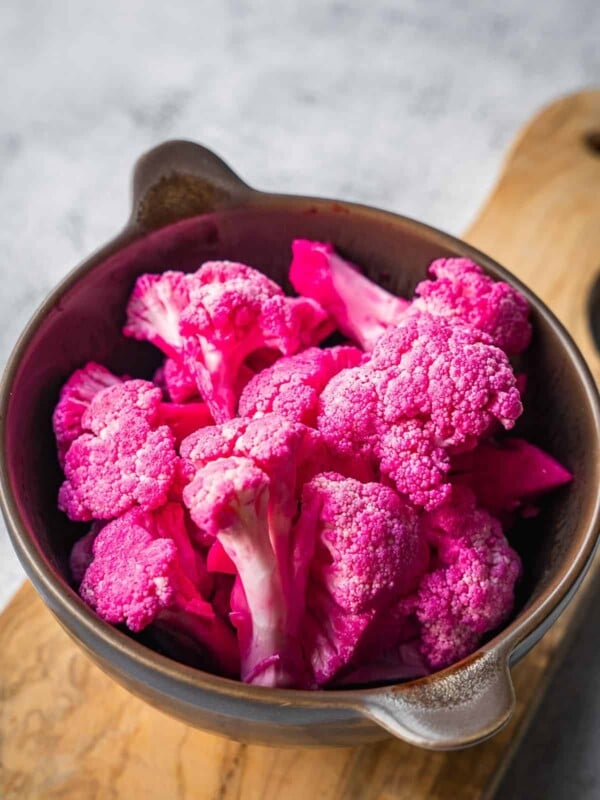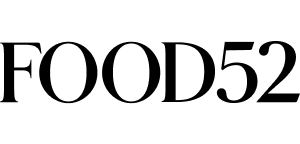Escabeche (Spicy Mexican Pickled Vegetables) is a classic condiment served at most Mexican restaurants that can easily be made right at home. This refrigerator pickle recipe is not only foolproof and easy, it comes together in under 15 minutes. Enjoy these spicy pickled vegetables with tacos, rice dishes, and eggs.
Enjoy it with my pulled beef barbacoa.

Table of Contents
What is Escabeche?
Escabeche is a cooking technique and a dish that involves marinating and pickling food, typically fish or meat, in a seasoned acidic mixture. The term “escabeche” is of Spanish origin and has been adopted and adapted by various cuisines around the world.
While the basic concept remains the same, the specific ingredients and flavors can vary significantly depending on the region and culinary traditions.
In Mexico, traditional escabeche involves pickling vegetables or even fruits in a vinegar-based mixture. The pickles can be served as a side dish or condiment and are available at your favorite Mexican restaurant or local taqueria.
In Spanish cuisine, escabeche often involves marinating fish or meat in a mixture of vinegar, oil, garlic, onions, and various herbs and spices. The marinated ingredients are usually cooked and then left to cool, allowing the flavors to meld.
In Filipino cuisine, “escabeche” refers to a sweet and sour fish dish. The fish is typically fried and then topped with a sweet and tangy sauce made from vinegar, sugar, soy sauce, and various vegetables like bell peppers and carrots.
This recipe is featured in my 11 Essential Pickle Recipes post!
Ingredients
Classic Mexican escabeche pickles need only a few common ingredients. It is also one of my favorite Mexican recipes to make as it’s so versatile and will give any dish a spicy and tangy kick.

- Jalapenos: It doesn’t get more Mexican than the Jalapeno pepper. This recipe uses jalapenos but you can also use Serrano peppers, they will be equally authentic. If you have jalapenos on hand, try my Fermented Jalapenos or Quick Pickled Jalapenos recipes too!
- Carrots: Sliced carrots are an integral part of this classic condiment. They add crunch and sweetness. Do try my Vietnamese pickled carrots recipe too.
- Onions: Onions are also classic. Use red onion or white onion. I like to cut mine into thin wedges (with the grain, from top to bottom) and separate them into pieces. This holds up better that way after pickling, whereas if you cut them in rings (against the grain) they could fall apart. Also, try my Mexican Pickled Onions.
- Vinegar: Distilled white vinegar is my go-to here and for many of my pickling recipes. Feel free to use a mixture of vinegar (apple cider vinegar, white wine vinegar). Avoid dark vinegar like red wine.
- Spices: I like to use a combination of bay leaves, black peppercorns and whole coriander seeds.
See the recipe card for full information on ingredients and quantities.
How to Make this Mexican Pickled Vegetables Recipe
This easy recipe comes together very quickly and with just a few steps.

Make the vinegar mixture. In a glass measuring cup, combine the vinegar, water, salt and sugar. Wisk well to combine.

Prepare the sliced vegetables. In a bowl, combine the sliced jalapenos, carrots and onions evenly.

Prepare the jar(s). To your jar(s), add garlic cloves, bay leaf, black peppercorns and coriander. Pack with the vegetable mixture. Depending on the size of the jar you use, you may need more than one.

Pour pickling liquid. Carefully pour the vinegar solution over the vegetable mixture, making sure to cover everything. Cover with a lid and pickle in the fridge for at least 48 hours before using.
Storage and Safety information
As always, make sure your equipment and jars are clean (with hot soapy water) and sterilized if possible before proceeding with the recipe. This will help reduce the chance of bacterial growth.
This recipe was NOT tested for water bath canning. These are refrigerator pickles, meaning that the pickling and storage stage happens in the fridge, just like in my other easy pickling recipes, pickled cherry tomatoes, pickled green tomatoes, pickled Serrano peppers, Giardiniera (pickled Italian vegetables), Danmuji (Korean pickled radish), Dilly Beans, and pickled turnips.
Fridge pickles could last in the fridge for several months, but I recommend you consume these pickles within 2 months if the jar is unopened or 1 month if the jar has been opened.
If you observe any unusual growths or odors, discard the batch. A good rule of thumb: when in doubt, throw it out.
To learn more about pickling (as well as lacto-fermenting, drying, confit and other preservation techniques), check out my book, Seed to Table.

Expert Tips
- Wear gloves! Protect your fingers and sensitive areas by wearing latex or nitrile gloves when handling hot peppers.
- Make it less spicy. Feel free to remove the seeds and ribs from the jalapenos to make a less spicy escabeche recipe.
- Make this into an easy quick pickle recipe. Sometimes we don’t have 48 hours to wait for a homemade pickle to be ready. To speed up the process, bring the pickling solution to a boil in a pot. Add the vegetables to the pot and simmer gently on medium-low heat for 5 minutes. Carefully transfer the vegetables and hot pickling solution to the jar and seal. The pickles will be ready to enjoy as soon as the jar cools to room temperature.
- Use glass jars. I recommend using glass mason jars. Don’t pickle in metal or plastic containers.
- Like it hot? Try some of my other spicy Mexican condiments like Salsa Macha, Salsa Roja, Avocado Salsa, and Chipotle hot sauce.
Recipe FAQs
This recipe was not tested for water bath canning. The recipe as written is a refrigerator pickle, meaning the pickling process and storage happens in the refrigerator.
If sealed, this recipe will last in the fridge for up to 2 months. If opened, I recommend enjoying it within a month. This is why you might want to consider making this recipe in smaller pint jars.
Other Pickle Recipes
Preservation
Levantine Recipes
Appetizers
Levantine Recipes
If you make this Escabeche (Homemade Spicy Mexican Pickled Vegetables) recipe or any other preservation recipe on Urban Farm and Kitchen, please take a moment to rate the recipe and leave a comment below. It’s such a help to others who want to try the recipe.
For more Urban Farm and Kitchen, follow along on Instagram, Facebook, and Pinterest, visit the Urban Farm Shop, or subscribe for new posts via email.
Escabeche (Homemade Spicy Mexican Pickled Vegetables)

Equipment
- ¾ quart mason jar – 750ml
Ingredients
- 1 cup White vinegar
- 1 cup Water
- 1 tbsp Kosher salt or sea salt
- 2 tsp Sugar
- 1 lb Jalapenos – Cut into rings
- 1-2 Carrots – Cut into julienne strips or small rings
- 1 Onion – Cut into strips
- 2 Garlic cloves
- 1 Bay leaf
- ½ tsp Black peppercorns
- ½ tsp Coriander seeds
Instructions
- Make the pickling solution. In a glass measuring cup, combine the vinegar, water, salt and sugar. Wisk well to combine.
- Prepare the vegetable mixture. In a bowl, combine the sliced jalapenos, carrots and onions evenly.
- Prepare the jar. To your jar, add two garlic cloves, bay leaf, black peppercorns and coriander seeds. Pack with the vegetable mixture. [Depending on the size of the jar you use, you may need more than one. Make sure to adjust the spices accordingly.]
- Pour pickling liquid. Carefully pour the vinegar solution over the vegetable mixture, making sure to cover everything. Cover with a lid and pickle in the fridge for at least 48 hours before using.
Notes
- Jalapenos: This recipe uses jalapenos but you can also use Serrano peppers, they will be equally authentic.
- Onions: Onions are also classic. Use red onions or white onions. I like to cut mine into thin wedges (with the grain, from top to bottom) and separate them into pieces. This holds up better that way after pickling, whereas if you cut them in rings (against the grain) they could fall apart.
- Vinegar: Distilled white vinegar is my go-to here and for many of my pickling recipes. Feel free to use a mixture of vinegars (apple cider vinegar, white wine vinegar, rice vinegar). Avoid dark vinegar like red wine.
- Spices: I like to use a combination of bay leaves, black peppercorns and whole coriander seeds.
- Salt: I recommend using pickling, kosher or sea salt. Don’t use standard table salt as it has added iodine.
Nutrition
Nutrition information is automatically calculated, so should only be used as an approximation.
 Like this recipe? Rate & comment below!
Like this recipe? Rate & comment below!














